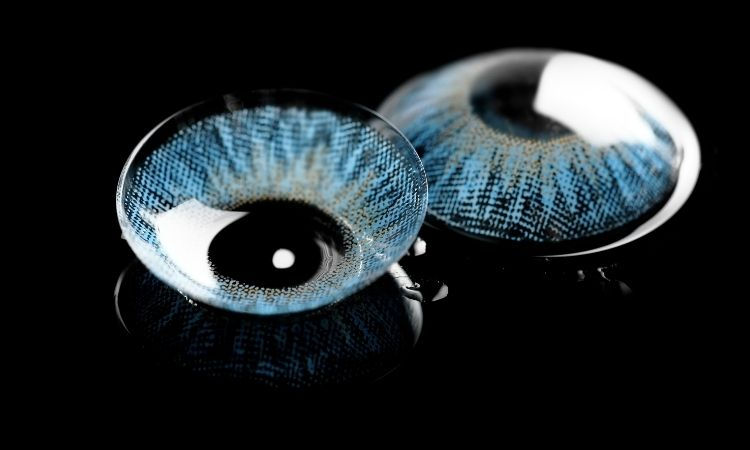Contact Lenses: Vision, Comfort, and Changing Lifestyles
- ankit Vijayran
- Jul 22
- 4 min read
Contact Lenses: More Than Meets the Eye

For millions of people worldwide, contact lenses have become a vital part of daily life—not just for vision correction but also for convenience, confidence, and even fashion. These tiny, curved lenses, worn directly on the surface of the eye, offer an alternative to traditional glasses and allow for clear peripheral vision, greater freedom in movement, and a nearly invisible solution to sight correction.
Whether it’s for nearsightedness, farsightedness, astigmatism, or presbyopia, contact lenses today come in a wide range of options—daily disposables, extended wear, toric, multifocal, and even cosmetic lenses that change eye color. Advances in lens materials have made them more breathable, moisture-retentive, and safer than ever before. They’re no longer just a clinical necessity—they’re a lifestyle choice.
In today’s fast-paced, image-conscious world, contact lenses are redefining how we experience and present ourselves. But their journey from medical innovation to everyday essential is as fascinating as the variety available on the market.
Expert Market Research Insight—What’s Driving the Contact Lenses Market
According to Expert Market Research, the contact lenses market continues to evolve with a strong push from technological advancements, changing consumer lifestyles, and growing demand for non-invasive vision correction methods. The shift from glasses to contacts is not merely aesthetic—comfort, convenience, and adaptability to modern lifestyles are central drivers.
Expert Market Research highlights the rapid development of silicone hydrogel lenses, which allow more oxygen to reach the eye, increasing comfort for extended wear. Similarly, smart contact lenses—capable of monitoring intraocular pressure, blood sugar, or even delivering medication—are transitioning from lab prototypes to commercial reality, particularly in tech-forward regions like the U.S. and South Korea.
E-commerce is also reshaping how users buy and use lenses. Subscription models for dailies and customizable lenses are on the rise, offering both convenience and affordability. Coupled with increased screen time and awareness of eye health, especially post-pandemic, the contact lenses market is seeing consistent growth across diverse user groups.
Regional Preferences and Eye-Care Culture
The global use of contact lenses varies significantly across regions, influenced by factors such as lifestyle, healthcare access, climate, and cultural preferences. In North America, particularly the United States and Canada, contact lens adoption is high, driven by awareness, accessibility, and a strong network of eye-care professionals. Daily disposables and soft lenses dominate the market, preferred for their hygiene and ease of use.
Europe follows closely, with countries like Germany, the UK, France, and the Netherlands leading the way in adopting innovative lens technologies. However, European consumers tend to be more cautious and are more likely to consult optometrists regularly. Environmental concerns have also driven the growth of reusable lenses and sustainable packaging options.
In the Asia-Pacific region, countries like Japan and South Korea have turned contact lenses into both medical tools and fashion accessories. Colored and circle lenses are especially popular among younger users, influenced by pop culture and beauty trends. Meanwhile, India and China, with their large populations and increasing urbanization, are witnessing rapid growth in demand, although access to professional eye care remains a challenge in rural areas.
Latin America and Middle Eastern regions are showing rising interest in premium lenses, as consumers seek better comfort and longer wear times. In Africa, the market is still emerging, with efforts focused on increasing awareness, affordability, and distribution.
A Close-Up on Cosmetic and Specialty Lenses
One area where contact lenses are making a distinct mark is in cosmetic and specialty uses. For many users, especially in urban and trend-driven markets like Tokyo, Seoul, and Los Angeles, lenses aren't just about vision correction—they’re about enhancing eye appearance. Circle lenses that make eyes appear larger, colored lenses that match fashion outfits, and theatrical lenses used in film and cosplay all cater to a growing cosmetic demand.
On the medical front, scleral lenses, orthokeratology (Ortho-K) lenses, and prosthetic lenses are providing solutions for people with keratoconus, corneal scarring, or irregular astigmatism. These specialty lenses often require custom fitting and are transforming lives by providing clarity and comfort where traditional lenses or glasses cannot.
This dual role—corrective and cosmetic—has widened the appeal of contact lenses, making them relevant for both healthcare professionals and fashion-forward consumers alike.
Hygiene, Comfort, and the Learning Curve
Despite the benefits, adopting contact lenses requires proper hygiene and care. Incorrect usage can lead to eye infections, dryness, or more severe complications. That’s why education remains a cornerstone of successful contact lens use.
First-time users often face a learning curve—applying, removing, and cleaning lenses can feel awkward. But with innovations like ultra-thin daily lenses and user-friendly packaging, manufacturers are addressing these concerns head-on. Eye-care professionals also play a critical role in guiding patients toward the right lens type based on eye shape, usage habits, and sensitivities.
As more users switch to contact lenses not just for necessity but for comfort and style, understanding care protocols is key to long-term eye health.
The Future of Contact Lenses: Where Vision Meets Innovation
The future of contact lenses is remarkably dynamic. From augmented reality integration to self-moisturizing lenses, researchers are developing features that stretch beyond vision correction into health tracking and digital interaction. Companies are also investing in eco-friendly materials and recyclable packaging, acknowledging consumer demand for sustainable practices.
Imagine a lens that adjusts to lighting conditions or alerts you of elevated glucose levels. This isn’t science fiction—these innovations are already in development and may soon become standard. With rising screen exposure and increased focus on personal health, smart and adaptable lenses could become the next big wearable technology.












Comments